David R. Thompson
Jet Propulsion Laboratory, California Institute of Technology
SpecTf: Transformers Enable Data-Driven Imaging Spectroscopy Cloud Detection
Jan 09, 2025



Abstract:Current and upcoming generations of visible-shortwave infrared (VSWIR) imaging spectrometers promise unprecedented capacity to quantify Earth System processes across the globe. However, reliable cloud screening remains a fundamental challenge for these instruments, where traditional spatial and temporal approaches are limited by cloud variability and limited temporal coverage. The Spectroscopic Transformer (SpecTf) addresses these challenges with a spectroscopy-specific deep learning architecture that performs cloud detection using only spectral information (no spatial or temporal data are required). By treating spectral measurements as sequences rather than image channels, SpecTf learns fundamental physical relationships without relying on spatial context. Our experiments demonstrate that SpecTf significantly outperforms the current baseline approach implemented for the EMIT instrument, and performs comparably with other machine learning methods with orders of magnitude fewer learned parameters. Critically, we demonstrate SpecTf's inherent interpretability through its attention mechanism, revealing physically meaningful spectral features the model has learned. Finally, we present SpecTf's potential for cross-instrument generalization by applying it to a different instrument on a different platform without modifications, opening the door to instrument agnostic data driven algorithms for future imaging spectroscopy tasks.
Impact of Scene-Specific Enhancement Spectra on Matched Filter Greenhouse Gas Retrievals from Imaging Spectroscopy
Jun 25, 2021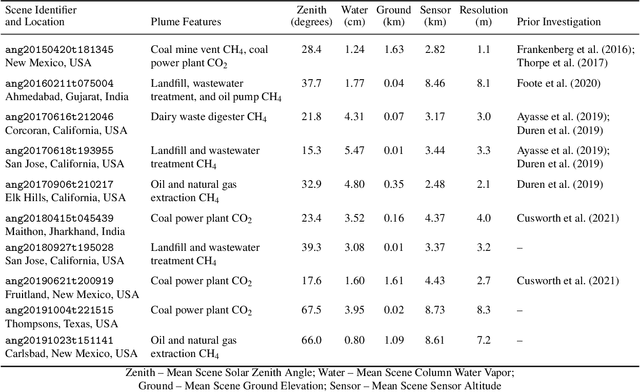
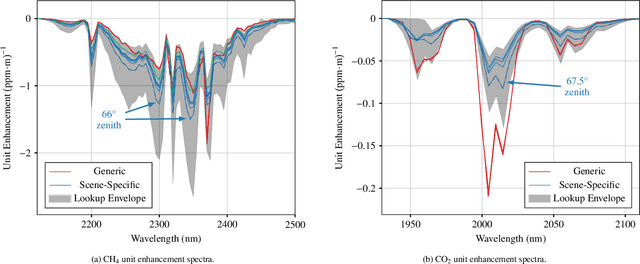
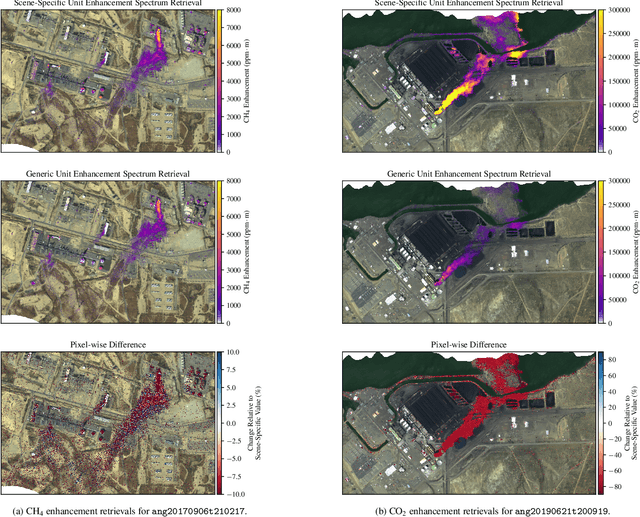
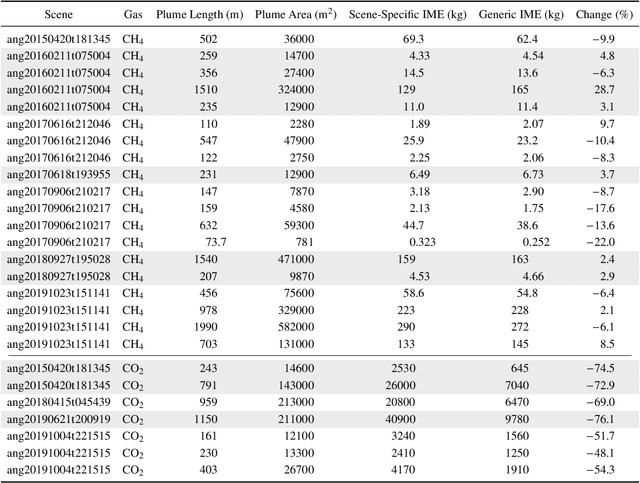
Abstract:Matched filter (MF) techniques have been widely used for retrieval of greenhouse gas enhancements (enh.) from imaging spectroscopy datasets. While multiple algorithmic techniques and refinements have been proposed, the greenhouse gas target spectrum used for concentration enh. estimation has remained largely unaltered since the introduction of quantitative MF retrievals. The magnitude of retrieved methane and carbon dioxide enh., and thereby integrated mass enh. (IME) and estimated flux of point-source emitters, is heavily dependent on this target spectrum. Current standard use of molecular absorption coefficients to create unit enh. target spectra does not account for absorption by background concentrations of greenhouse gases, solar and sensor geometry, or atmospheric water vapor absorption. We introduce geometric and atmospheric parameters into the generation of scene-specific (SS) unit enh. spectra to provide target spectra that are compatible with all greenhouse gas retrieval MF techniques. For methane plumes, IME resulting from use of standard, generic enh. spectra varied from -22 to +28.7% compared to SS enh. spectra. Due to differences in spectral shape between the generic and SS enh. spectra, differences in methane plume IME were linked to surface spectral characteristics in addition to geometric and atmospheric parameters. IME differences for carbon dioxide plumes, with generic enh. spectra producing integrated mass enh. -76.1 to -48.1% compared to SS enh. spectra. Fluxes calculated from these integrated enh. would vary by the same %s, assuming equivalent wind conditions. Methane and carbon dioxide IME were most sensitive to changes in solar zenith angle and ground elevation. SS target spectra can improve confidence in greenhouse gas retrievals and flux estimates across collections of scenes with diverse geometric and atmospheric conditions.
Learning Radiative Transfer Models for Climate Change Applications in Imaging Spectroscopy
Jun 08, 2019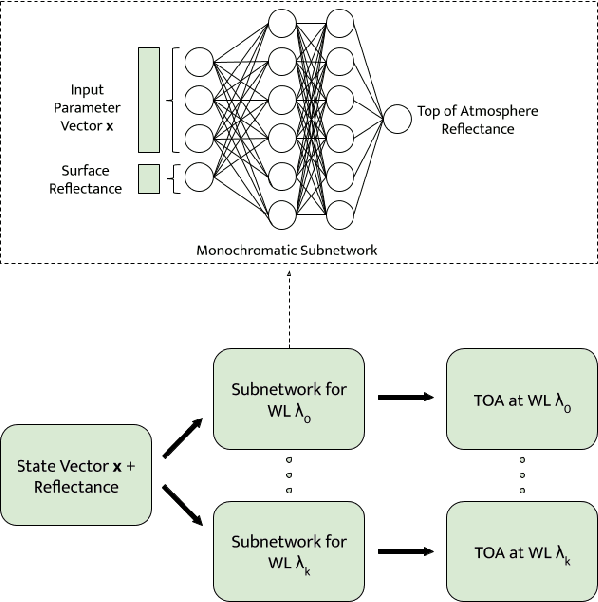
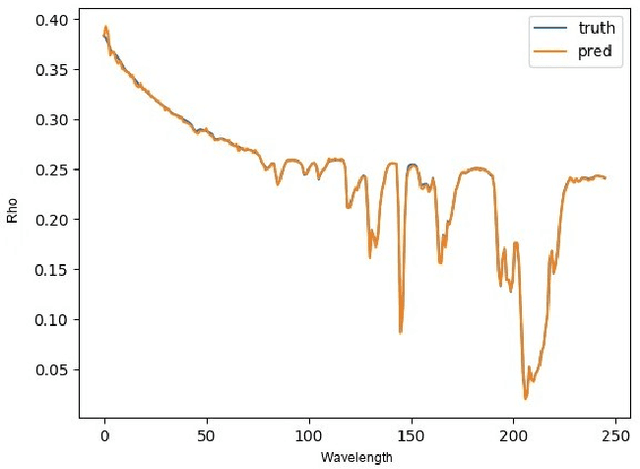
Abstract:According to a recent investigation, an estimated 33-50% of the world's coral reefs have undergone degradation, believed to be as a result of climate change. A strong driver of climate change and the subsequent environmental impact are greenhouse gases such as methane. However, the exact relation climate change has to the environmental condition cannot be easily established. Remote sensing methods are increasingly being used to quantify and draw connections between rapidly changing climatic conditions and environmental impact. A crucial part of this analysis is processing spectroscopy data using radiative transfer models (RTMs) which is a computationally expensive process and limits their use with high volume imaging spectrometers. This work presents an algorithm that can efficiently emulate RTMs using neural networks leading to a multifold speedup in processing time, and yielding multiple downstream benefits.
 Add to Chrome
Add to Chrome Add to Firefox
Add to Firefox Add to Edge
Add to Edge